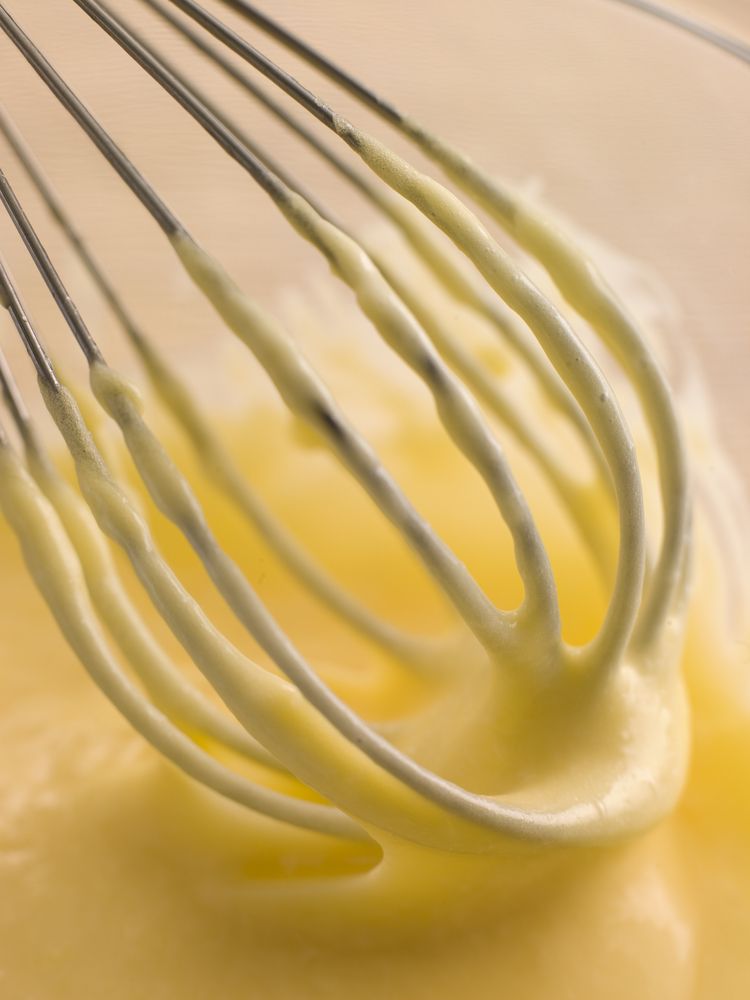The “mother sauces” were developed during the early 1800s by the bastion of French cuisine, Marie-Antoine Carême, and are a mainstay of French cuisine and cooking in general. Except for Hollandaise, all the mother sauces start with a roux at their foundation which begs the question: what is a roux? Answer: nothing to be afraid of. Pronounced “roo,” a roux is a cooked mixture of equal parts by weight of fat and flour. That’s it!
The word roux takes its name from the Latin “russus” and French “roux” which mean red. Thus, it’s probably fair to assume that the first roux was a darker, reddish brown sauce, still evidenced in many of the Southern French dishes, while the lighter roux probably came into fashion in subsequent years. By cooking flour with fat, the cereal flavor is cooked out and a toasty flavor develops which gets more pronounced the longer you cook it. For those who are wondering, yes, it’s the Maillard reaction, a chemical reaction between amino acids and sugars that’s giving the roux its yummy smell and flavor. The darker you go with a roux, the less gelatinous it will be, but go too dark and it starts to lose its binding, saucy nature. Generally, the fat of choice is clarified butter, though other fats can be used. Animal fats, such as chicken fat, beef drippings and lard, are used when the flavor they impart is appropriate to the sauce. Thus, it’s suitable to use chicken fat for a chicken velouté, and beef drippings can be used for a sauce to accompany a steak. When properly used, animal fats can greatly enhance the flavor of a sauce.
The 5 French Mother Sauces
- Béchamel (Bay-sha-mel)
This is a roux of equal parts flour and (generally) clarified butter. After the flour has cooked, the milk or other dairy is whisked in, giving you a good texture that’s light on flavor. As such, béchamel is what you’ll find in dishes like chicken pot pie in which the sauce doesn’t play a starring role but rather binds other ingredients together.
- Velouté (vay-LOO-tay)
Velouté, which means velvet in French, is a roux of equal parts flour and animal fat or butter. The flour and fat are combined and toasted lightly, then a clear stock of chicken, fish or beef is whisked in, resulting in a delicate flavor. A classic velouté is not jarring or obtrusive.
- Espagnole (ES-paHN-noll)
This is one of the more complex sauces and you’ve had it in loads of dishes from pot roasts to boeuf bourguignon. In a sauce espagnole (which means Spanish), flour is added to clarified butter and cooked until fully toasted. After that, a dark stock such as veal of beef is added along with tomato puree.
- Sauce Tomat (sauce toe-maht)
The classic French sauce tomat differs from an Italian marinara since it starts with rendered pork fat. That gets toasted with flour, then comes the tomato puree, aromatics and vegetables like onion, perhaps some carrot or the French trifecta—mirepoix. Wondering what to pour that sauce tomat over? Try breaded pork chops.
- Hollandaise (hol-lan-days)
Perhaps the most recognized French sauce, at least in the U.S, Hollandaise, is not a roux; it is an emulsion of egg yolk and clarified butter. Thanks to the unbinding nature of the two principle ingredients, it’s also the trickiest of the mother sauces. Hollandaise is all about timing and technique. It’s made by carefully whisking the yolks and butter together in a glass or metal bowl that’s placed over a pot of boiling water. Lemon, salt and other seasonings (if desired) are added at the end.





